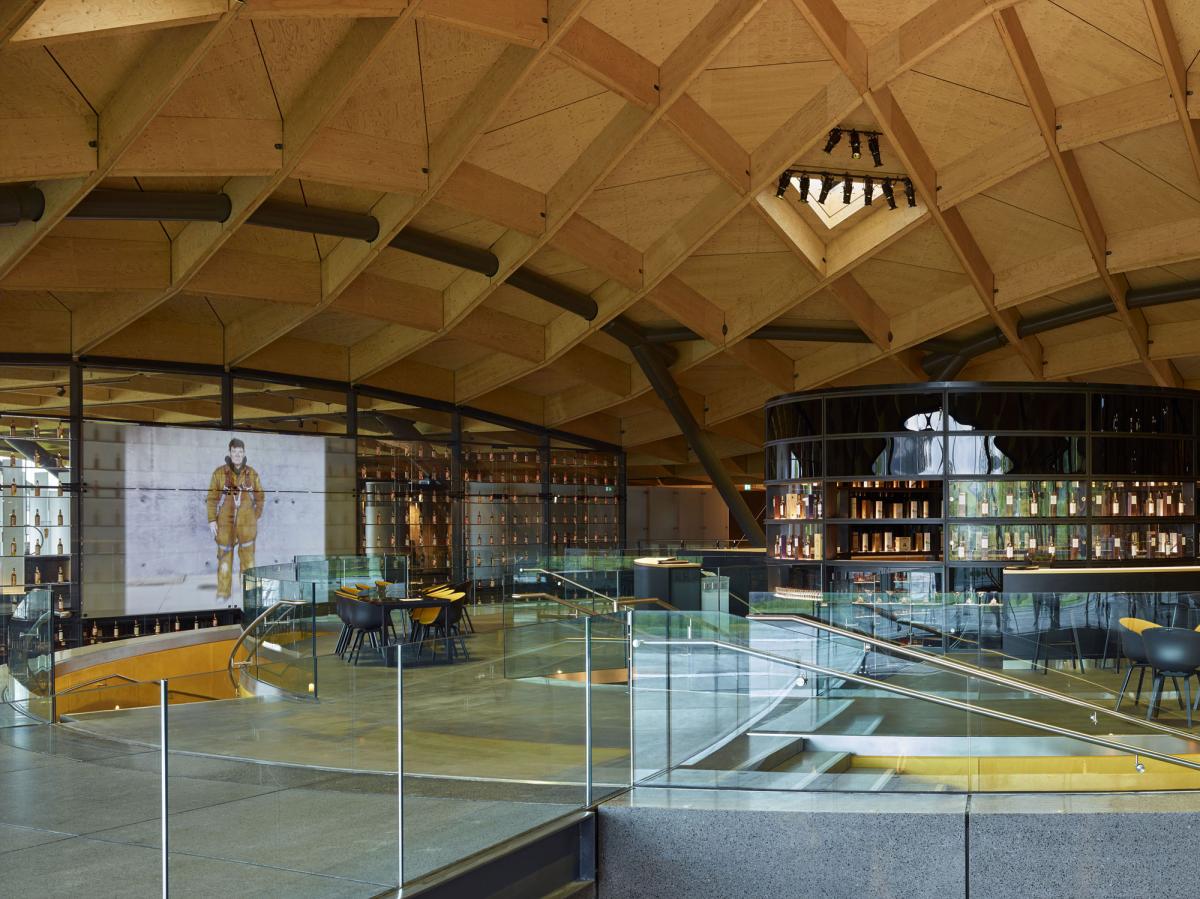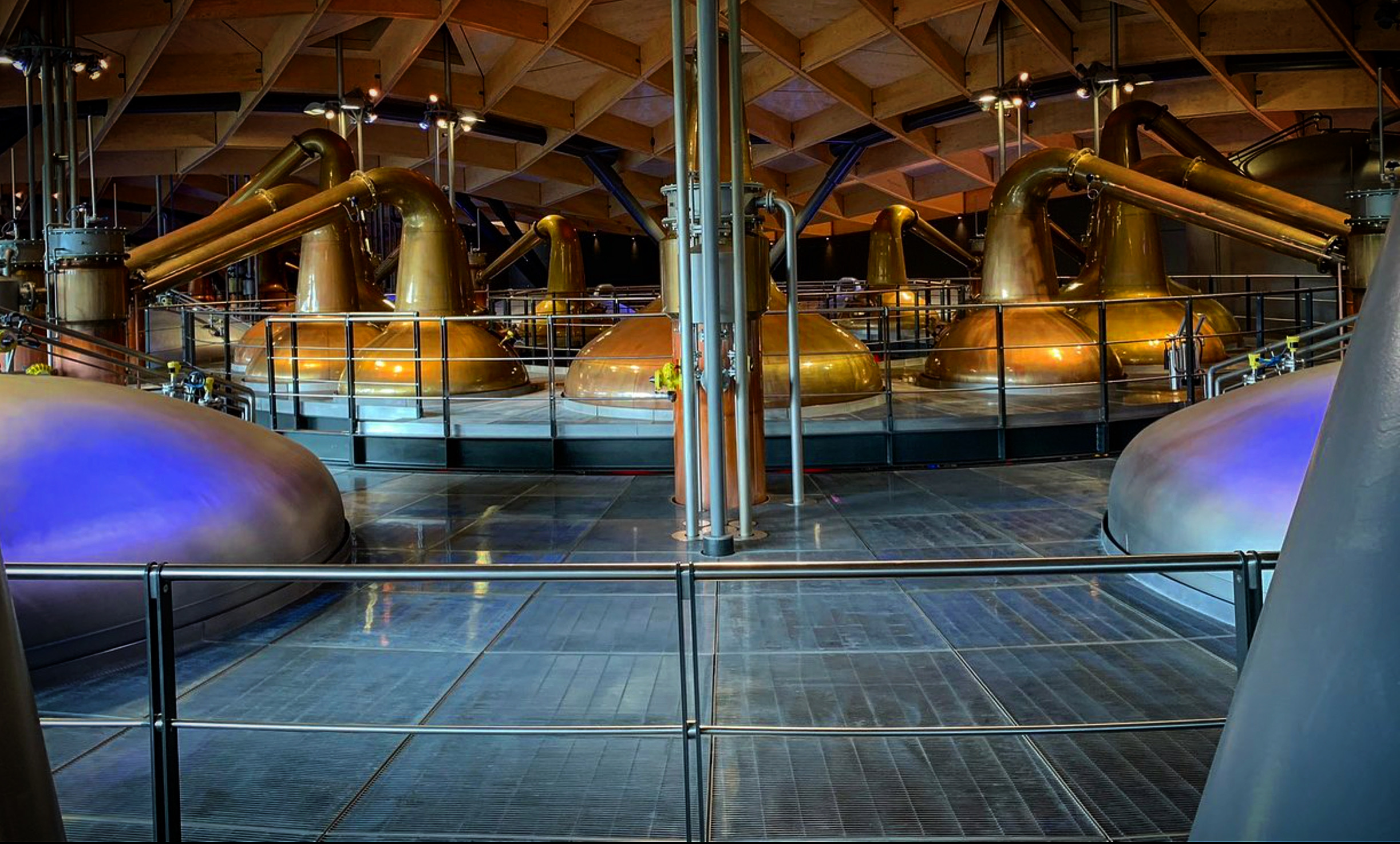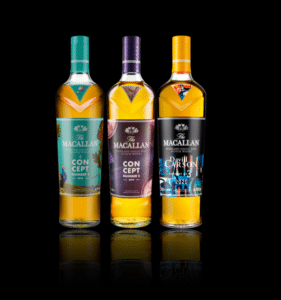The plant has continually been expanded from its original wooden shed with two stills. It was increased to five stills (two wash, three spirit) in 1954 and then more significantly in 1965 when a new stillhouse with seven stills was built. This process continued throughout the 1970s with the total number of stills reaching 21 by 1975.
For a distillery which has become synonymous with the growth of single malt, it is worth remembering that Macallan has always been an important malt for blending. It wasn’t until the early 1980s, faced with a downturn in the market for fillings, that Macallan decided to focus more strongly on the then new single malt category.
The management team of Allan Shiach, Frank Newlands, Hugh Mitcalfe and Willie Phillips oversaw a campaign which both positioned the malt as a ‘first-growth whisky’ it called ‘the Cognac of whisky’, while always retaining a somewhat bohemian and irreverent approach to advertising and promotion.
A firm belief in the fusion of the oily, heavy, new make style and ex-Sherry casks saw Macallan, under Edrington’s governance, become the first distillery to create so-called ‘bespoke’ casks: selecting specific trees (predominantly in northern Spain, though some American oak is specified), and then with Jerez-based cooper Tevasa specifying the length and nature of drying, type of coopering, the liquid used for seasoning (oloroso) and the duration of that process. Investment in wood has increased significantly in recent years, with a complex of massive warehouses being built on the estate.
In recent years, a greater emphasis has been placed on the nascent luxury whisky market with bottlings of 50- and 60-year-old Macallan in Lalique decanters, the creation of the Fine & Rare vintage range dating back to 1926, and the Masters of Photography series.
This has not been without controversy. Its growing status as a collectable malt saw Macallan become the victim of fakers in the late 1990s. The subsequent investigation has, however, helped establish a methodology to check the authenticity of suspicious bottlings.
On a whisky-making front, 2004 saw the introduction of Fine Oak, where American oak ex-Sherry casks and some ex-Bourbon casks were used in a mirror range to the ‘classic’ 100% ex-Sherry range. Though old Macallan lovers protested, the lighter, sweeter, flavour profile brought in new drinkers, mostly in new markets.
The 1824 Range, a four-strong series not carrying age statements which replaced some of the younger expressions in the portfolio, followed in 2013, using whisky colour as a communication and branding device.
The second stillhouse was brought back on stream in 2008, and in 2013 it was announced that a completely new, £100m distillery was to be built.
The new distillery – a distinctive subterranean design – was commissioned on 9 November 2017 and opened officially in May 2018, at a final cost of £140m.
















































